The fact of the matter is this for Giants fans: Aaron Rowand is going to be the Giants center fielder on Opening Day, and he most likely is going to bat leadoff unless one of three things happen:
1.) Mark DeRosa gets hurt again this Spring Training and is unable to play on Opening Day, which forces manager Bruce Bochy to play either Eugenio Velez or Andres Torres in left field (who would be slotted in at leadoff because of their speed).
2.) Velez goes nuts this Spring Training (entirely possible) and Bochy somehow is convinced that despite his negative UZR at the position, Velez can start second base. So, Bochy plugs in Velez at second over Uribe (because Freddy Sanchez, the "$12 Million Man" will miss Opening Day) and consequently at leadoff despite his .308 OBP last season.
3.) Rowand gets hurt sometime during Spring Training and Torres, Rowand's backup, gets the nod on Opening Day. Because of Torres' speed, Bochy gives him the leadoff spot.
Overall, only one of the options I like, and even then, I don't like it all that much (I don't think it's very hard to guess which option it is). That being said, when talking about Rowand, a very important notion does come up concerning the center fielder:
Who do the Giants have in the farm system to replace him or succeed him?
Right now, there basically are two candidates:
Francisco Peguero and Darren Ford.
Both centerfielder prospects are on the 40-man roster heading into the 2010 season and are currently playing in Spring Training games down in Scottsdale with the Major League team at this moment. There is a lot of promise and hype surrounding the two speedy centerfielders, especially after their solid 2009 campaigns in the minor leagues.
Yet, as we know, two players can't play the same position. So, which prospect is better? Which prospect should Giants fans be expecting to start in center field when Rowand (and his ridiculous contract) finally leave San Francisco?
Let's take a more in-depth look at the two young outfielders.
Why Giants Fans Should Expect Big Things from Peguero:
Peguero, a Top 10 prospect in the Giants system according to some experts, is being touted as a "Pablo Sandoval Without the Power But More Speed"-esque hitter, and you know what? It makes a lot of sense. Peguero, who will be only 22 in June, is a heck of a hitter and he sure proved last season in Salem-Keizer and Augusta.
In 17 games with the Volcanoes last year, Peguero hit .394, and posted a .421 OBP, a .435 wOBA and an .886 OPS. Furthermore, he also stole seven bases and didn't get caught once. In Augusta, Peguero also performed admirably. In 58 games, he hit .340, and posted a .359 OBP, a .367 wOBA, and a .796 OPS (not bad considering he only had a .437 slugging percentage).
Peguero is an accomplished base stealer who has shown promise on the basepaths since his rookie season. In 2008, the then 20-year-old stole a combined 25 bases (10 in the Arizona Rookie League and 15 in Single-A Augusta) while only getting caught four times (an 86.2 percent success rate).
In addition to being a solid base stealer, Peguero is also a tough out at the plate. Last season in the Northwest League, pitchers were only able to strike Peguero out 12.7 percent of the time, and in Single-A, Peguero only struck out 16.7 percent of the time. While the numbers aren't extraordinary, they are an improvement from his rookie season. In 2008 in Arizona and Augusta, Peguero struck out 21.3 and 23.9 percent of the time, respectively. Thus, 2009 showed that Peguero made strides in terms of honing his plate discipline.
Peguero also proved to be a solid defender in 2009. In both levels, he averaged a 2.43 RF/G. His RF/G was 11 points higher than Ford's RF/G in San Jose in 2009 (and Peguero also made one less error and one more double play than Ford as well).
Why Peguero May Not Be the Answer for Giants Fans:
As good a hitter as Peguero is in terms of making contact, there are some serious plate discipline issues for the Dominican outfielder. Basically, Peguero can't draw a walk to save his life. In 328 plate appearances last season between Salem Keizer and Augusta, Peguero drew eight walks. (Eight! That's it!) His walk percentage ended up being 3.9 percent for the Volcanoes and 2.0 percent for the Greenjackets, and his BB/K ratios were 0.33 and 0.13 for the Volcanoes and Greenjackets, respectively.
It is understandable that Peguero may not be the best at taking a walk, and if Sandoval has shown Giants fans anything, that isn't necessarily a bad thing (the "Panda" illustrated that you can achieve Minor and Major League success despite low walk numbers). Yet Peguero doesn't really offer any power, unlike Sandoval, who at least showed a modicum of power in the minors (and a lot more in the Majors).
In 2009, Peguero had a .070 and .097 ISO in Salem Keizer and Augusta, respectively, and he has only had an ISO over .100 once in his minor league career (during his stint in the Arizona Rookie League where it was .124). Thus, without much power to compensate, Peguero needs to get on base to maximize his speed and his meager walk numbers certainly don't make bode well in terms of keeping a solid OBP as he rises through the farm system.
Another sketchy statistic concerning Peguero's 2009 were his high BABIP numbers. In Salem Keizer, Peguero posted a .444 BABIP. In Augusta, he posted a .396 BABIP. Chances are, as he begins the year in Double-A or higher in 2010, he won't be able to post BABIP numbers that high again. They simply are too high to sustain, especially while advancing through the minor leagues. Thus, the question is this: can Peguero continue to find gaps on balls he puts in play and if he can't (which is inevitable at some point) can he improve his walk numbers enough so he can continue to get on base despite the drop on BABIP?
It could happen, but after a stint this winter in the Dominican Winter League where he hit .284, Peguero did not show much progress in terms of plate patience. In 67 at-bats this winter, Peguero only drew three walks (with one being intentional).
Why Giants Fans Should Expect Big Things from Ford:
Darren Ford is a speed demon on the basepaths. Plain and simple.
In 2006, his first season in Single A, Ford stole 69 bases for the West Virginia Power (the Milwaukee Brewers' Single-A organization). In 2007, in a combined stint with West Virginia and Brevard County (the Brewers' Advanced Single-A organization) he stole 67 bases. In 2008, while playing for Brevard County and San Jose (he was traded to Giants in the Ray Durham deal), he stole 62 bases. And, last season, he stole 35 bases in 101 games for San Jose.
As you can see, Ford has some serious base-stealing potential, not a bad quality considering the Giants' stolen base leader, Randy Winn (who stole 16 bases in 2009) signed with the New York Yankees this off-season.
And yet, stealing bases may not be the only thing Ford does well. Last season, Ford showed that he may be a solid hitter in addition to being a solid baserunner.
In San Jose last season, Ford had a breakout party of sorts at the dish. In 441 plate appearances, Ford hit .300 with a .386 OBP, a .384 wOBA, and an .849 OPS. Furthermore, Ford scored 81 runs (the most he's had at any stint since his 2006 seasons in West Virginia) and added nine home runs, nine triples and 17 doubles to his offensive resume in 2009. He also continued his solid, patient approach at the plate, as he posted an 11.1 percent walk rate (he hasn't posted a walk rate underneath nine in his professional career) and a 0.51 BB/K ratio.
For fans who miss Rajai Davis, but still like what Fred Lewis has to offer to the Giants "free-swinging" offense, Ford may be a combo of both. He is a player that has the speed of Davis, but the plate patience of Lewis. He also proved to be solid defensively in 2009, as evidenced by his 2.32 RF/G.
Ford definitely has something to offer for Giants fans of all tastes.
Why Ford May Not Be the Answer for Giants Fans:
Ford killed in Advanced Single-A last year. That being said, he was also 23 at the time, and it was his fourth go-around in Advanced Single-A to boot. So in many ways, Ford was almost an old man beating up on the competition of sorts in 2009, so a lot of his stats (especially his hitting stats) may have to be taken with a grain of salt, especially considering he didn't post a wOBA over .317 in his three previous stints in Advanced Single-A.
Additionally, while his walk rates are promising, his strikeout rates aren't. Ford strikes out a lot, and considering it's only Single-A, that makes a lot of fans wonder how he will fare at the Major League level. Ford has only posted a strikeout rate under 25 percent once in his professional career (24.5 percent in 2007 with Brevard County). And even last year, his breakout year, he still posted a 25.5 percent strikeout rate, and actually posted the lowest BB/K ratio of his four stints in Advanced Single-A.
So how did Ford have such a coming out party? His BABIP greatly increased from his last three stints in Advanced Single-A.
In 2007 and 2008 in Brevard County, Ford posted a .288 and .301 BABIP, respectively. In 2008 in San Jose, his BABIP was .326.
Last year? It was .379, the highest BABIP he's had since 2007, where he had a .427 BABIP with West Virginia.
Thus, with an increase in BABIP, it is predictable that his offensive numbers would improve so dramatically. Yet, like I said about it being his fourth year in Advanced Single-A, Giants fans have to take that BABIP numbers with a grain of salt. The California League (the league San Jose plays in) is notorious for being a "hitter's league," and last year was no exception. A lot of players posted extraordinarily high offensive numbers (especially in BABIP) in their stints for California League teams, only to see their number dip once they advanced to the next level.
One case that doesn't bode well for fans of Ford? Just take a look at Brandon Crawford in 2009.
In San Jose, Crawford hit like a mad man, posting a .371 average, .445 OBP, .445 wOBA, and a 1.045 OPS. However, his BABIP also happened to be .493 (incredibly high). When he got promoted to Double-A later in the season, his BABIP fell to .334 and his stats feel accordingly. With the Connecticut Defenders, Crawford only hit .258 with a .294 OBP, .299 wOBA and a .659 OPS.
Does this mean a similar drop off will happen for Ford in 2010 as he advances to Double-A? Maybe, maybe not. Ford is a more disciplined hitter over his career in comparison to Crawford (Crawford only posted BB/K ratios of 0.31 and 0.20 in San Jose and Connecticut, respectively). So that bodes in Ford's favor.
However, while Ford's plate patience is promising, by no means should Giants fans think that Ford will automatically being transitioning his San Jose stats to Double-A and beyond in 2010.
The Verdict?
It's a tough one to call at this point. Right now, I would say it's a dead heat between Peguero and Ford in terms of being the "centerfielder of the future" for the Giants, and it will definitely be interesting keeping tabs on these two in Spring Training (go to AZGiants.com for the latest Spring Training bits on the two, as well as Giants Spring Training news in general).
So far, Peguero is better at making contact and hitting for higher average, but Ford is a more patient hitter and a better base stealer. How do you differentiate between the two? It really depends on which qualities you like more from a player as a baseball fan.
Right now, just because I like his Fred Lewis/Rajai Davis hybrid abilities, I am in the Ford camp. However, Peguero is definitely capable of swinging my vote should he be able to improve his walk numbers and keep up his high batting average in 2010.
Subscribe to:
Post Comments (Atom)




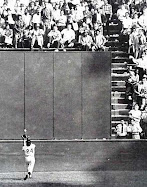
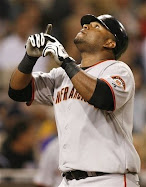
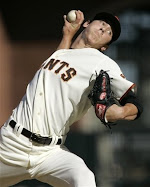
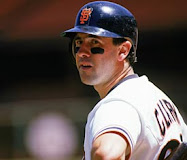
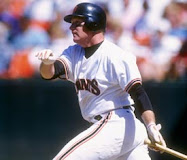
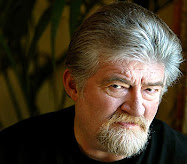

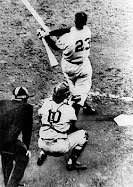
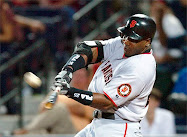
No comments:
Post a Comment